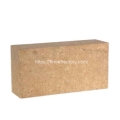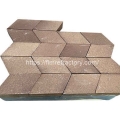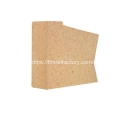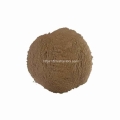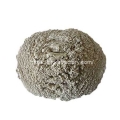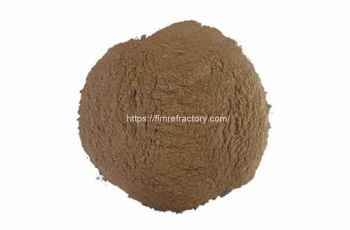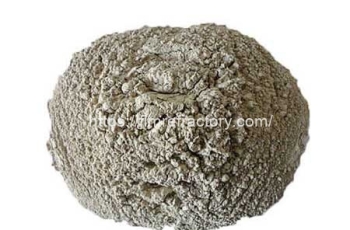- Performance. Innovation. Worldwide. Your trustworthy Refractories Manufacturing Partner--Fireramo
- +86 175 3769 7777
High Alumina Mortars
- Category: Refractory Mortar
- |
- Author: Fireramo
Fireramo high alumina mortar is a kind of refractory mortar made of high alumina refractory clinker powder with appropriate amount of plastic clay binding agent and plasticizer.
- Origin: China
- Product Name: Fireramo High Alumina Mortars
- Type: Refractory Material
- Shape: Powder
- Transport Package: Export Ton Bags
- Production Capacity: 5000ton/Month
Search
Contact
High quality refractory bricks
Product Details
High Aluminum Mortar For sale
Description of Fireramo High Alumina Mortars
Fireramo high alumina mortar, also known as high alumina refractory clay, high alumina bauxite refractory clay, is a kind of high alumina refractory clinker powder with the appropriate amount of plasticized clay binding agent and plasticizer made of refractory clay. Fireramo high alumina mortar with an Al2O3 content of 55%-85%, which has the advantages of high strength, high temperature and corrosion resistance, and is widely used in the masonry of blast furnaces, hot blast furnaces, lime kilns, electric furnaces and other high temperature equipment.

Fireramo, as a manufacturer of high alumina mortar, we offer you 8 kinds of high alumina mortar, LN-55A, LN-65A, LN-75A, LN-85A LN-55B, LN-65B, LN-75B and LN-85B. You can buy them as per requirement or contact us for customized service.
What is refractory mortar?
Refractory mortar, formally known as refractory slurry, is composed of refractory powdered material with a certain particle ratio and a binding agent and admixture. The slurry is adjusted with water or other liquid binding agents and used as a jointing material for masonry, also known as jointing compound. High-alumina mortars are made of high-alumina refractory clinker powder with appropriate amount of additives, featuring good plasticity, high bonding strength, high corrosion resistance, high load softening temperature, good thermal shock resistance, resistance to spalling and erosion, and so on.
Characteristics of Fireramo high alumina mortar
High refractoriness
High-alumina refractory mortar is mainly made of crushed high-alumina refractory bricks, which has high refractoriness and can resist high temperature.
Good chemical stability
High-alumina refractory mortar is not easy to have chemical reaction with furnace gas and slag, does not produce erosive substances, not easy to flake and pulverization, and can maintain its protective effect for a long time.
Good thermal stability
Under high temperature, the strength and abrasion resistance of high alumina refractory mortar will not be reduced, and it is not easy to soften, crack and flake, and it can maintain its physical and mechanical properties for a long time.
Low water absorption
High-alumina refractory mud under high temperature water absorption rate is small, maintaining high porosity, good slag resistance, strong resistance to scouring, can maintain its long-term use of the effect.
High volume stability and load softening temperature
Under high temperature, high alumina refractory mortar has good volume stability and will not be affected by heat deformation.
Strong plasticity
High-alumina mortars are also a kind of unshaped refractory material with strong plasticity, which can be processed into various shapes and sizes of refractory products.
Fast bonding time
The bonding time of high alumina refractory mortar is generally around 2-3 minutes, which is very fast, and it is an indispensable raw material for the joints of refractory bricks in the process of building high temperature kilns.
Good corrosion resistance
As the raw material of high alumina mortar contains a large number of alumina, silicon oxide and other components, these substances have good corrosion resistance, so high alumina refractory mud also has good corrosion resistance, able to resist high temperature kilns in the production of some corrosive materials corrosion.
High compressive strength
High-alumina mortar compressive strength is generally affected by the amount of water, with the increase in the amount of water compressive strength will be reduced, in the case of conventional water, generally after 72 hours of solidification, the compressive strength will generally remain at about 60Mpa.
Application of Fireramo high alumina refractory mortar
The application of high alumina refractory mortar is mainly in the lining of high-temperature industrial furnaces and kilns in the fields of iron and steel, cement, chemical industry, metallurgy and so on, such as ironmaking furnace, converter, electric furnace and coal-fired furnace and so on. It can effectively resist chemical erosion and mechanical abrasion at high temperatures and protect the walls of industrial furnaces and kilns. In addition, high alumina refractory clay can be used in ceramic fiber modules to enhance their insulation properties and resistance to thermal shock.
The advantages of high alumina refractory mortar include high strength, high temperature resistance, corrosion resistance, and good workability. The preparation method includes selecting suitable crushed high alumina refractory bricks, mixing and stirring them with appropriate amount of water and binder to make the mud, and adding appropriate amount of additives in the masonry process to improve the performance of the refractory mud.
Fireramo high alumina mortar Specifications
High Alumina Mortars | Common Type | Phosphate Bonded Type | |||||||||
| LN-55A | LN-65A | LN-75A | LN-85A | LN-55B | LN-65B | LN-75B | LN-85B | |||
Al2O33 (%) ≥ | 55 | 65 | 75 | 85 | 55 | 65 | 75 | 85 | |||
Refractoriness(℃) ≥ | 1770 | 1790 | 1790 | 1790 | 1770 | 1790 | 1790 | 1790 | |||
Cold Flexural Strength (Mpa) ≥ | 110℃ After Drying | 1.0 | 1.0 | 1.0 | 2.0 | 2.0 | 2.0 | 2.0 | 2.0 | ||
| 1400℃*3h After Burning | 4.0 | 4.0 | 4.0 | — | 6.0 | 6.0 | 6.0 | — | ||
| 1500℃*3h After Burning | — | 6.0 | — | 6.0 | ||||||
Refractoriness Under Load 2%(℃) ≥ | — | 1300 | 1400 | 1400 | 1600 | ||||||
Permanent Linear Change (%) | 1400℃*3h After Burning | 1-5 | 1-5 | 1-5 | — | 1-5 | 1-5 | 1-5 | — | ||
| 1500℃*3h After Burning | — | 1-5 | — | 1-5 | ||||||
Bonding Time (Min) | 1-3 | ||||||||||
Particle Size (%) | -0.1mm | 100 | |||||||||
| +0.5mm | 2 | — | ||||||||
| -0.074mm | 50 | 40 | 50 | 40 | ||||||
Production process of high aluminum mortar
Preparation of clay slurry: make clay slurry in the slurry mixer, the mud, also known as billet and brick material, is a variety of raw materials, granular materials or powder according to a certain proportion of matching, in the mixing machine, add water or other binding agent mixing and mixing and obtaining the mixture.
Preparation of mud: according to the batching ratio of the cone material unloaded into the wet mill, add clay slurry and sulfite pulp waste liquid, mixing 2~3min after joining the cylinder mill powder, and then mixing 10~20min.
Preparation of raw material: Send the clay material into ball mill for grinding and prepare raw material.
Sintering: Send the raw material to rotary kiln for sintering, and the sintered clinker is ground into fine powder by ball mill to become high alumina cement.
Control the composition and temperature: in the sintering process, it is necessary to strictly control the composition of the ingredients and the firing temperature to ensure the quality of high-alumina cement.
Packing for factory: High-alumina cement is packed into bags or bulk and transported to the customer’s site.
Specializing in refractory materials for over 20 years, we provide professional refractory solutions for the global high temperature industry.
Related Posts:
Theme By Fireramo
